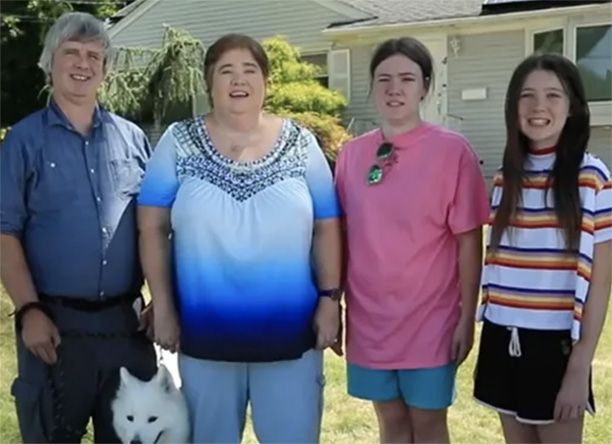Bipolar I Basics
What is bipolar I disorder?
Bipolar I disorder is a condition that causes periods of severe changes in your mood, activity levels, energy, and ability to carry out everyday tasks. These changes are commonly called “mood episodes.”
- Although you may feel alone, ~3 million Americans are affected by
bipolar I
disorder each year - While anyone can develop
bipolar I
disorder, it often starts in the late teen or early adult years and it lasts a lifetime - Medical researchers believe that it can result from many factors, including an imbalance of certain chemicals in the brain called neurotransmitters, which may be too high or too low
Did you know?
Bipolar I disorder often runs in families. If you have a family history of bipolar I disorder, be sure to let your healthcare provider know.
What are the symptoms of bipolar I?
Bipolar I disorder can cause unpredictable high and low mood swings, also known as manic and depressive episodes.
It’s impossible to predict how long mood episodes may last. You might be severely depressed for a brief or extended period of time. Mania could last anywhere from a week to months as well. You may even experience manic and depressive symptoms at the same time, which is known as a mixed episode. Bex and Heidi, two individuals living with bipolar I, shed light on depressive and manic aspects of bipolar I.
The people featured in these videos are sharing their individual experiences with bipolar I. Individual experiences with the condition and treatment will vary. Not all of those featured are currently taking VRAYLAR.
Bex Bipolar I Patient Testimonial
See the transcript for Bex's patient testimonial video about their experience with bipolar I depression. See full Prescribing, Safety Info & Boxed Warnings.
TranscriptBex's experience with bipolar I depression
Heidi Bipolar I Patient Testimonial
See the transcript for Heidi's patient testimonial video about her experience with bipolar I mania. See full Prescribing, Safety Info & Boxed Warnings.
TranscriptHeidi's experience with bipolar I mania
Symptoms to consider talking to your healthcare provider about
Select a mood state below to see common symptoms.
Not all of these symptoms may be indicative of bipolar I.
Commonly referred to as the “lows,” depressive symptoms include at least five of the following, lasting for at least two weeks:
- Having trouble concentrating
- Forgetting things a lot
- Thinking about death or suicide
- Having trouble sleeping
- Feeling like you can’t enjoy anything
- Feeling very down or sad
- Feeling worried and empty
- Sleeping too much or too little
- Changes in appetite or weight
- Having little to no interest or pleasure in your hobbies
Mixed episodes occur when highs and lows are experienced at the same time. For example, you may be having a mixed episode if you’re:
- Having trouble concentrating
- Forgetting things a lot
- Thinking about death or suicide
- Having trouble sleeping
- Feeling like you can’t enjoy anything
- Feeling exhausted but overly wired
- Having too much energy while feeling very sad
- Being talkative while pessimistic
- Behaving impulsively while feeling exhausted
- Behaving impulsively
- Feeling jumpy or wired
- Feeling like your thoughts are coming very fast
- Becoming more active than usual
- Having higher than usual energy levels
Commonly referred to as the “highs,” manic symptoms include at least three of the following (four if the mood is only irritable), lasting for at least one week:
- Behaving impulsively
- Feeling jumpy or wired
- Feeling like your thoughts are coming very fast
- Becoming more active than usual
- Having higher than usual energy levels
- Being agitated, irritable, or touchy
- Not feeling tired or needing little sleep
- Talking really fast about a lot of different things
- Thinking you can do a lot of things at once
- Feeling overconfident in your abilities

Do these symptoms sound familiar?
Answer some questions that could help your healthcare provider determine whether you may have bipolar I disorder.
What can trigger bipolar I episodes?
Depressive and manic episodes are often triggered by something. Being aware of your triggers or warning signs can help you in managing your mood episodes.
Common triggers for bipolar I disorder may include:
- Sleep deprivation
- Medications
- Seasonal changes
- Substance abuse
Some triggers you can control or manage, while others you may not. Be sure to discuss your triggers with your doctor.
Use this mood tracker to record your symptoms each day and help your healthcare provider spot warning signs of bipolar I disorder.
How is bipolar I diagnosed?
Bipolar I disorder can go unrecognized for years by not only those who suffer with it, but by family, friends, and even healthcare providers. Manic symptoms are reported less often than depressive ones for most people with bipolar I, so healthcare providers may only see, and therefore treat, symptoms of depression instead of bipolar I disorder.
The first step: If you think you may have bipolar I, talk with a doctor. They can complete a physical exam to rule out other conditions.
Why this matters: People with bipolar disorder often have other health problems including substance abuse, anxiety disorders, thyroid disease, heart disease, and obesity. These conditions can have similar symptoms to bipolar I disorder, which can complicate the diagnosis of bipolar I disorder.
How is bipolar I diagnosed?
Bipolar I disorder can go unrecognized for years by not only those who suffer with it, but by family, friends, and even healthcare providers. Manic symptoms are reported less often than depressive ones for most people with bipolar I, so healthcare providers may only see, and therefore treat, symptoms of depression instead of bipolar I disorder.
The first step: If you think you may have bipolar I, talk with a doctor. They can complete a physical exam to rule out other conditions.
Why this matters: People with bipolar disorder often have other health problems including substance abuse, anxiety disorders, thyroid disease, heart disease, and obesity. These conditions can have similar symptoms to bipolar I disorder, which can complicate the diagnosis of bipolar I disorder.
Bipolar I depression is different
Bipolar refers to the opposite ends (the poles) of the emotional spectrum—lows (depression) and the highs (mania). In addition to the deep, unshakeable sadness or emptiness felt by patients with major depressive disorder (MDD), patients with bipolar I also experience manic episodes.
Treatments for MDD may not be effective for patients with bipolar I disorder, so it’s important to get the right diagnosis.

How is bipolar I treated?
An effective treatment plan for bipolar I often includes a combination of:
However, the cornerstone of every treatment plan is medication, and finding the right one for you could take some time.
Your healthcare provider will start the process by evaluating your symptoms and treatments. So it’s critical to share all the symptoms you’re experiencing now or have experienced in the past, as well as the medications you’re taking now or have taken in the past.

Start the conversation
Answer 3 simple questions to create a personalized discussion guide for your next appointment.
Additional resources
Tips for managing bipolar I
Discover tips that may help manage your bipolar I disorder.
Bipolar I quiz
Answer questions that could help your healthcare provider determine whether you may have bipolar I disorder.
*Terms and conditions apply. Available to commercially insured patients only. See Terms and Conditions for full details.







